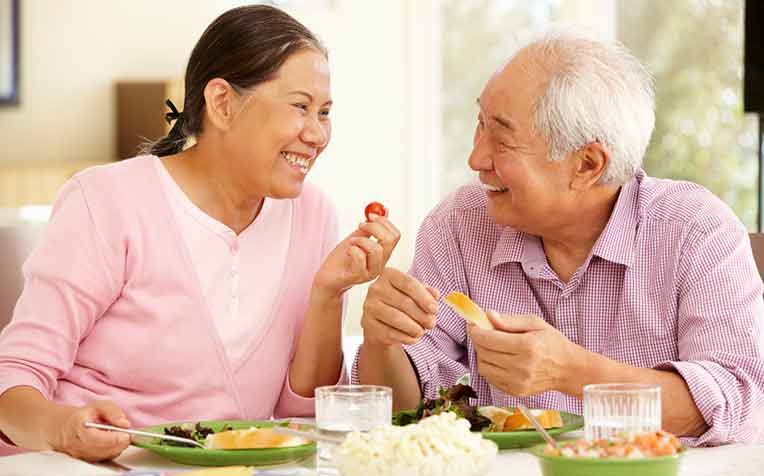
Diabetes control is in your hands! The key is keeping within your individualised carbohydrate requirements.
With diabetes, knowing what you can eat and what to avoid doesn't have to be confusing. Ms Kala Adaikan, Senior Principal Dietitian, Department of Dietetics, Singapore General Hospital (SGH), a member of the SingHealth group, helps set the record straight.
Myth 1: Avoid all starchy foods at all cost FACT:
All starchy foods break down to glucose, which is our body's preferred source of energy. Choose starchy foods that are high in fibre such as:
- Wholegrain rice
- Wholegrain breads
- Wholegrain noodles and pasta
- Wholegrain cereals

Myth 2: All ‘sugar-free’ products are calorie-free

![]() FACT:
FACT:
Some sugar-free products, such as sugar-free biscuits and cakes also contain carbohydrate in the form of starch and can still increase your blood glucose levels.
Myth 3: People with diabetes should never consume sugar

![]() FACT:
FACT:
You may be still be able to include some sugar in your diet by learning how to count your carbohydrates. Speak to your dietitian to know how.
Myth 4: Bitter-tasting food will help lower blood glucose levels

![]() FACT:
FACT:
Bitter-tasting foods, such as bitter gourd, will not help lower your blood glucose levels. Glucose levels in your blood rises with the amount of carbohydrates eaten.
Myth 5: Switching to wholegrain rice means I can eat more rice

![]() FACT:
FACT:
The carbohydrate content of wholegrain rice is similar to regular rice. Wholegrain rice provides more fibre by comparison, making it a healthier option.
![]() FACT:
FACT:
Excessive intake of any nutrient, including protein, may lead to weight gain. The key is to know your own body's requirements for protein and keeping to it (refer to My Healthy Plate).

Myth 7: It’s ok to eat my favourite sweets when I have hypoglycaemia (low blood glucose)
![]() FACT:
FACT:
Hypoglycaemia (low blood glucose) should be treated with 15g of fast acting carbohydrates, for readings less than 4.0 mmol/L. You can have:
- Half a can of soft drink (150ml-200ml) OR
- Half a glass of fruit juice (150ml) OR
- 4 to 5 glucose tablets OR
- 3 Teaspoons of sugar with half cup of water
Avoid the urge to eat your favourite sugary snacks when you have hypoglycaemia (low blood glucose) as you may over treat your hypoglycaemia and cause a spike in your blood glucose levels.
Myth 8: Fat does not matter, so I can ignore the fat content in my meals
![]() FACT:
FACT:
A large amount of fat keeps blood glucose levels elevated for a longer period of time, making it difficult to keep levels within the desirable range as it slows down the digestion of carbohydrates. Fat provides twice as much calories than carbohydrate and protein (gram for gram). Thus, too much fat could contribute to weight gain. Too much saturated fat may lead to undesirable lipid profiles, increasing your risk of cardiovascular disease.
Myth 9: People with diabetes shouldn’t eat fruits
![]() FACT:
FACT:
People with diabetes should still eat all kinds of fruit, as they are rich sources of antioxident vitamins, minerals and fibre. Consume 2 portions of fresh fruit a day, and avoid fruit juices.

Myth 10: Losing weight will definitely cure my diabetes
![]() FACT:
FACT:
If you are overweight, losing weight may not necessarily cure your diabetes. However, losing 5% to 10% of your weight may help your blood glucose control by improving insulin resistance. Losing weight may also help control your blood lipids and blood pressure.

Does having diabetes mean you can never consume sugar? Click the link to learn the facts about this and other diabetes diet myths.
Because #healthiswealth #healthforgood
Ref: L20
Other diabetes articles you may be interested in:
Hypoglycaemia (Low Blood Glucose): Symptoms and What to Do
Contributed by


















 Get it on Google Play
Get it on Google Play